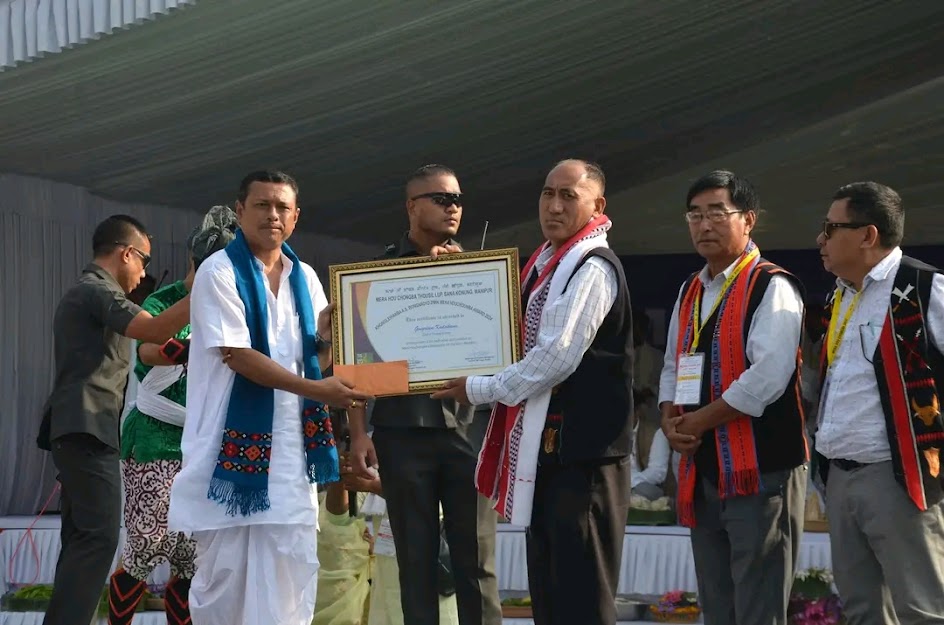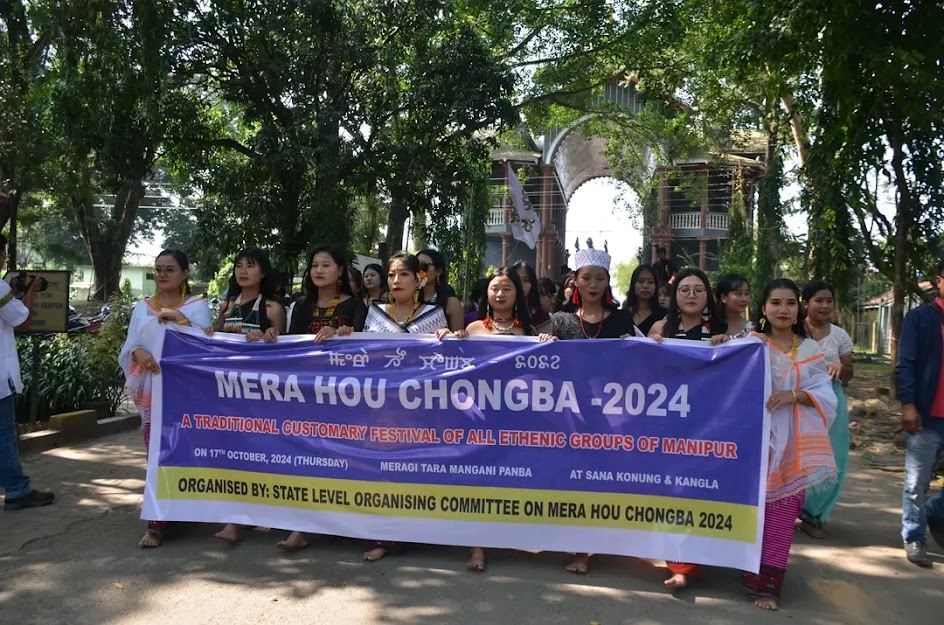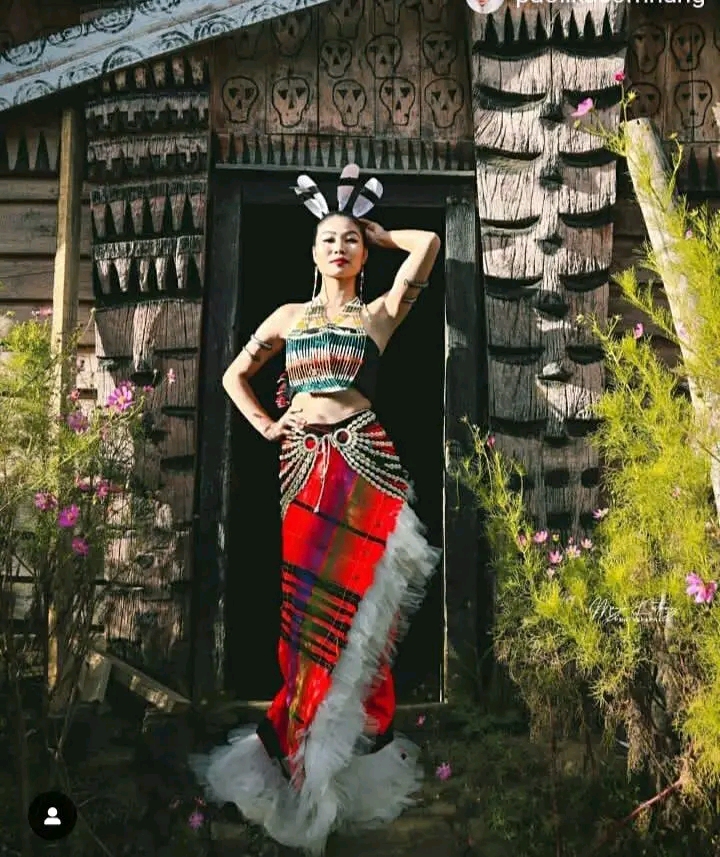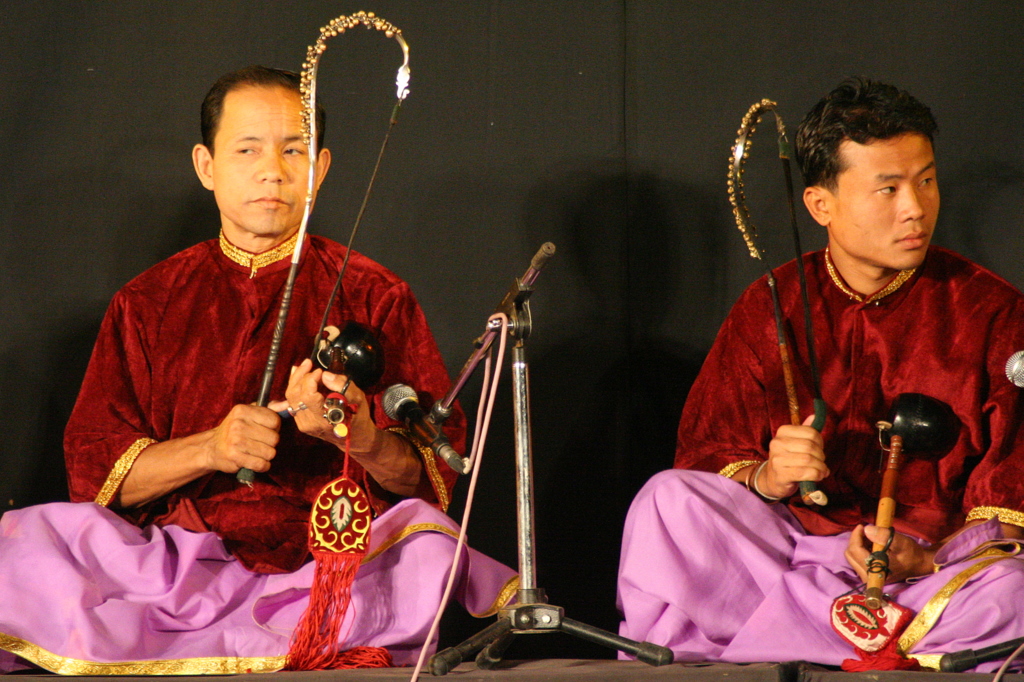Mera Hou Chongba is a traditional festival celebrated in Manipur that embodies the themes of unity and cultural solidarity among the various indigenous communities. The term “Mera” refers to a month in the Manipuri lunar calendar which is October in the Gregorian calendar, while “Hou Chongba” translates to “grand feast” or “great gathering.” Together, “Mera Hou Chongba” signifies a grand assembly held during the month of Mera, where people from different tribes and communities come together to celebrate their shared heritage and foster a sense of brotherhood.
The festival is marked by cultural exchanges, traditional performances, and the sharing of gifts between the hill tribes and valley people. It highlights the unity and respect among the diverse ethnic groups of the region and reinforces their bonds through communal activities and rituals. By celebrating Mera Hou Chongba, the people of Manipur honor their historical connections and continue the tradition of mutual support and friendship.
Historical and Mythological Context
Mera Hou Chongba festival of Manipur is founded on two principal historical and mythological contexts. The first context pertains to the belief that the people residing in Manipur originally belonged to a single familial group. Over time, some members of this group migrated to the hills while others settled in the valleys. Due to the geographic separation and the challenges of survival, these communities had limited opportunities for interaction. To bridge this gap, the valley inhabitants, particularly those in low-lying areas, initiated the tradition of lighting lamps during the lunar month of Mera (corresponding to October). This tradition, known as Mera Wayungba, symbolized a beacon for their hill-dwelling brethren, who would then descend with fresh produce and fruits.
Upon noticing the illuminated courtyards in the valleys, the hill communities would reciprocate by bringing fresh vegetables and fruits, thereby reinforcing their bonds through the exchange of gifts. The hill inhabitants also participated in the festival by setting aflame small portions of the hills, a practice known as Lammei Thaba, or the burning of dry leaves and trees.
Economic and Social Context
During the lunar month of Mera, the valley communities often faced depletion of their granaries as they awaited the harvest of new crops, typically paddy, which occurs post-Ningol Chakouba in the months of November and December. Consequently, October was marked by a scarcity of essential food items. The hill communities would then provide fresh vegetables, meat, and rice, while the Meitei king would extend his blessings by ensuring abundant food and drinks for all.
Cultural Exchange and Performances
The festival is characterized by elaborate cultural exchanges. People from each community wear their traditional attire and participate in dance performances, singing folk songs, and other cultural displays unique to their heritage. Through these activities, the ethnic groups not only celebrate their individuality but also demonstrate their respect for each other’s traditions. Traditional games and sports are also held, featuring activities such as weightlifting and simulated hunting displays, which are designed to showcase physical strength and skills important to each tribe’s way of life. In addition to the cultural displays, the men engage in strength-based activities such as weightlifting and mock warfare to showcase their physical prowess, reflecting both their resilience and the distinct identities of each ethnic group.
Gifts and Offerings
In the context of Mera Hou Chongba, the gifts brought by the hill people are simple and reflective of what they have in their villages and what they can afford. These gifts include items such as Chak Paotam, Kurek, Kairenphi, Phiton, Phimu, Chakhum Phitoop, Lashing, Hawai, Thoiding, Yaingng, Shing (ginger), Pan, Hentak Chafu, Yu (wine), Ngaamu, Pongkot, Sareng Paonga, Heimang Polang, Puleimanbi, Long, Sairup, Yendai, Yangkok, Sumchit, Chengchamluk, Thoumei, Kairangthouri, Thang, Dolai, Chamangli, Khoiru, Thouri, Paya, Suk, Lihing Mapak, Khoijuleikham, Pukham, Tengkot, Uchan, Hidak Pon, Mengkruk, Mukthrubi, and some money. Specific tribes have their unique gifts; for instance, Etham, Montha, Keihou, and Umang groups bring items like Mangtaruk and Lamchata clothes, Langte offers a Sangdang (Mithun animal), Aimol provides Chak Khurum Phitup, Kurek, Charol, Mitlang Sumchit, and Chak Paotam, Tarou brings Heipon and Phimu, Mayon offers Thoiding and Naiphi, Anal provides Thoiding Pon, Uchan, Shuk, and Hidak Pon, Tangkhul Awang group brings Lashing (cotton), Shing Pon (ginger), and Hawai (grains), and Tingsang offers yu (wine). Different ethnic groups wear their traditional dresses, with items like Lik Moirik, Likkon Pareng, and Poham worn around the neck, Longthrei on the ears, Ivory tusks on the arms, and animal bones on the legs.

Scholarly Perspectives of Mera Hou Chongba
Different scholars have varied interpretations of Mera Hou Chongba. Scholar Khulem Chandrashekhar Singh, an eminent scholar of old Manipuri literature, explains that during the month of Mera, hill tribes come down to the royal palace to present gifts to the king, performing traditional folk dances, songs, and other cultural activities. This festival, therefore, symbolizes unity and cultural exchange. Scholar Moirangthem Chandra Singh, another eminent scholar, highlights that the festival emphasizes the brotherhood between hill tribes and valley people, with both groups exchanging gifts to reinforce their relationships.
Mera Hou Chongba, a culturally significant festival in Manipur, has been misinterpreted by certain researchers and politicians with vested interests as a manifestation of Meitei hegemony over smaller tribes. This interpretation is entirely unfounded and lacks substantial evidence. The true essence of Mera Hou Chongba lies in the celebration of unity and brotherhood among all indigenous communities residing in the former Manipur kingdom.
Rituals and Celebrations of Mera Hou Chongba
Every year on the 10th of Mera, the ritual event Mera Shanduba is performed, involving the sacrifice of a Shandang (ox) to Goddess Nunggoibi. The meat is then cooked, and a grand feast is organized for both hill tribes and valley people, signifying prosperity and unity. Historical records, such as R. Brown’s Statistical Accounts of Manipur, describe the festival as a gathering of hill tribes showcasing their diverse cultures through traditional attire, dances, and strength-based activities.
The festival typically spans five days and includes indigenous games and sports, resembling the Olympics of the Manipur kingdom, with participants receiving significant rewards. Contrary to claims of subjugation, historical evidence indicates that the Meitei kings granted autonomy to their hill and valley subjects, appointing village heads or Khullakpas to manage their territories, thereby fostering a cordial relationship.
Also Read: Maram Chanu Ingallei, Worshiped as Ima Langol Tarung Lairembi by Meitei
Modern Celebrations of Mera Hou Chongba
Today, Mera Hou Chongba continues to be a vibrant celebration of Manipur’s rich cultural heritage. It is organized by the State Level Organising Committee, under the patronage of Sana Konung (Royal Palace). Earlier the festival was organized by Haomacha Loishang (Hill Tribes Committee) under the supervision of hill village heads. It serves as an opportunity for all ethnic groups, including the king, to come together and celebrate their unity. The exchange of gifts, traditional performances, and communal feasting underscore the festival’s significance in promoting solidarity, oneness, and mutual respect among the diverse communities of Manipur.
Conclusion
Mera Hou Chongba is not merely a festival of joy but a profound symbol of unity and cultural solidarity. Despite differing scholarly interpretations, the festival’s core essence remains a testament to the enduring brotherhood and shared heritage of Manipur’s indigenous communities. Celebrated with great enthusiasm and mutual respect, Mera Hou Chongba continues to strengthen the bonds among the hill tribes and valley people, preserving their rich traditions and collective identity.
Image credit – Google
(C) Naorem Mohen
The Writer can be reached at Twitter @laimacha
Editor | Signpost News







